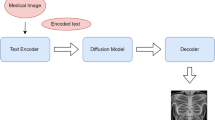Abstract
During the process of fine segmentation of medical images, although a single threshold can improve the efficiency of processing, there will be the problem of fuzzy features and non-convergence of threshold in denoising of details such as contour extraction. To extract contour information of medical images, a method based on multi-threshold optimization is proposed. This paper analyzes the influence of contour wave transformation on gray correlation degree and noise intensity of different medical images and improves the Bayesian threshold. The middle threshold function was improved by correlation characteristics of contour wave coefficients, and contour features of medical images were constrained by multiple thresholds. Based on the above, the dimension of the medical image was reduced by the wavelet multi-resolution analysis method, and the corresponding threshold search space was obtained. A genetic algorithm was used to find the best quasi threshold in the search space. Through this value, the attribute histogram of the medical image was established, the best feature extraction threshold of the medical image was obtained by the golden section method, and contour feature information of the medical image was extracted. The experimental results show that the proposed method can achieve the fast extraction of the contour feature information of running image, get an ideal feature extraction effect, and has high efficiency of feature extraction.








Similar content being viewed by others
References
Liu S, Liu X, Wang S, Muhammad K (2020) Fuzzy-Aided Solution for Out-of-View Challenge in Visual Tracking under IoT Assisted Complex Environment. Neural Computing and Applications, doi: https://doi.org/10.1007/s00521-020-05021-3
Dwivedi A, Srivastava G, Dhar S, Singh R (2019) A decentralized privacy-preserving healthcare blockchain for iot. Sensors 19(2):326
Lv N, Chen C, Qiu T et al (2018) Deep Learning and Superpixel Feature Extraction based on Sparse Autoencoder for Change Detection in SAR Images. IEEE Transactions on Industrial Informatics 14(12):5530–5538
Abdel-Basset M, Fakhry A, El-henawy I et al (2017) Feature and intensity based medical image registration using particle swarm optimization. J Med Syst 41(12):197
Laixing Y, Lin F, Jing Z et al (2016) Image feature extraction method for adaptive fusion target and background. Journal of Computer-Aided Design & Computer Graphics 28(8):1250–1259
Shimin W, Bailiang C, Jihua Y et al (2016) Face image feature extraction based on weighted multiscale tensile quantum space. Data Acquisition and Processing 31(4):791–798
Shuai L, Chunli G, Fadi A et al (2020) Reliability of response region: a novel mechanism in visual tracking by edge computing for IIoT environments. Mech Syst Signal Process 138:106537
Liu S, Bai W, Liu G et al (2018) Parallel fractal compression method for big video data. Complexity 2018:2016976
Zheng P, Shuai L, Arun K et al (2018) Visual attention feature (VAF): A novel strategy for visual tracking based on cloud platform in intelligent surveillance systems. Journal of Parallel and Distributed Computing 120:182–194
Gadekallu TR, Khare N, Bhattacharya S, Singh S, Maddikunta PK, Srivastava G (2020) Deep neural networks to predict diabetic retinopathy. J. Ambient Intell. Humaniz. Comput
Jie C, Li S (2017) Image feature extraction based on kernel competitive learning algorithm. Acta Metrological Sinica 38(5):579–583
Reddy GT, Reddy MP, Lakshmanna K, Kaluri R, Rajput DS, Srivastava G, Baker T (2020) Analysis of dimensionality reduction techniques on big data. IEEE Access 8:54776–54788
Liu S, Wang S, Liu X et al. (2020) Fuzzy Detection aided Real-time and Robust Visual Tracking under Complex Environments IEEE Transactions on Fuzzy Systems, https://doi.org/10.1109/TFUZZ.2020.3006520
Shuai L, Gaocheng L, Huiyu Z (2019) A robust parallel object tracking method for illumination variations. Mobile Networks and Applications 24(1):5–17
Huang K-W, Lin C-C, Lee Y-M, Wu Z-X (2019) A Deep Learning and Image Recognition System for Image Recognition. Data Science and Pattern Recognition 3(2):1–11
Lin Y, Wang C, Ma C, Dou Z, Ma X (2016) A new combination method for multisensor conflict information. J Supercomput 72(7):2874–2890
Liu S, Pan Z, Cheng X (2017) A novel fast fractal image compression method based on distance clustering in high dimensional sphere surface. Fractals 25(4):1740004
Nguyen T-T, Pan J-S, Lin JC-W (2018) An optimal node coverage in wireless sensor network based on whale optimization algorithm. Data Science and Pattern Recognition 2(2):11–21
Pan J-S, Wang X, Chu S-C, Nguyen T-T (2020) A Multi-group Grasshopper Optimisation Algorithm for Application in Capacitated Vehicle Routing Problem. Data Science and Pattern Recognition 4(1):41–56
He G, Yang J (2018) Application of the slicing technique to extract the contour feature line. Clust Comput 8(13):1–7
Hafez M, Shafie A, Shaqfeh M et al (2018) Thresholds optimization for one-bit feedback multi-user scheduling. IEEE Wireless Communication Letters 7(4):646–649
Kanmani P, Marikkannu P (2018) MRI brain images classification: a multi-level threshold based region optimization technique. J Med Syst 42(4):62–90
Xingying L, Weina F (2019) Regularized super-resolution restoration algorithm for single medical image based on fuzzy similarity fusion. EURASIP Journal on Image and Video Processing 1:83
Zhou X, Fu W. A Multi-Agent Simulation Method of Urban Land Layout Structure based on FPGA. Mobile Networks and Applications, online first, https://doi.org/10.1007/s11036-019-01361-0
Author information
Authors and Affiliations
Corresponding author
Additional information
Publisher’s Note
Springer Nature remains neutral with regard to jurisdictional claims in published maps and institutional affiliations.
Rights and permissions
About this article
Cite this article
Li, W., Huang, Q. & Srivastava, G. Contour Feature Extraction of Medical Image Based on Multi-Threshold Optimization. Mobile Netw Appl 26, 381–389 (2021). https://doi.org/10.1007/s11036-020-01674-5
Accepted:
Published:
Issue Date:
DOI: https://doi.org/10.1007/s11036-020-01674-5




